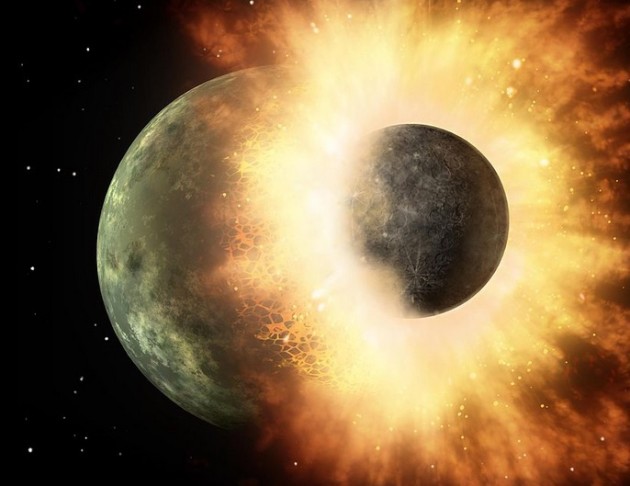
An epic collision billions of years ago may have created the moon, according to a new study out of UCLA. A team of scientists theorize that Theia, a celestial body thought to be the size of Mars, collided with Earth head-on, creating a mixture of debris that eventually settled into the moon as we know it today.
Scientists have long speculated the moon was made from an ancient collision between a planetary body and Earth, but today’s study suggests the impact was much more violent than originally thought—not just a slight glance, as early studies theorized.
The key is in the rocks, according to the study.
“We don’t see any difference between the Earth’s and the Moon’s oxygen isotopes; they’re indistinguishable,” said Dr. Edward Young, professor at UCLA and lead of the study.
Scientists were able to study rocks brought back to Earth by the Apollo missions, and analyzed them against volcanic rocks from the Earth’s mantle. Scientists normally expect rocks from different planets to contain different isotopes—almost like fingerprints. But that’s not the case with the Earth and the Moon.
“[The study] suggests that the moon-forming impact thoroughly mixed and homogenized the oxygen isotopes of Theia and proto-Earth,” Young said.
In addition to the suggestion that the Moon was born from the impact, Dr. Young and his colleagues also believe much of the Earth’s water came from Theia, either trapped in minerals or as ice.
You can read Young’s full study at the source link below.













